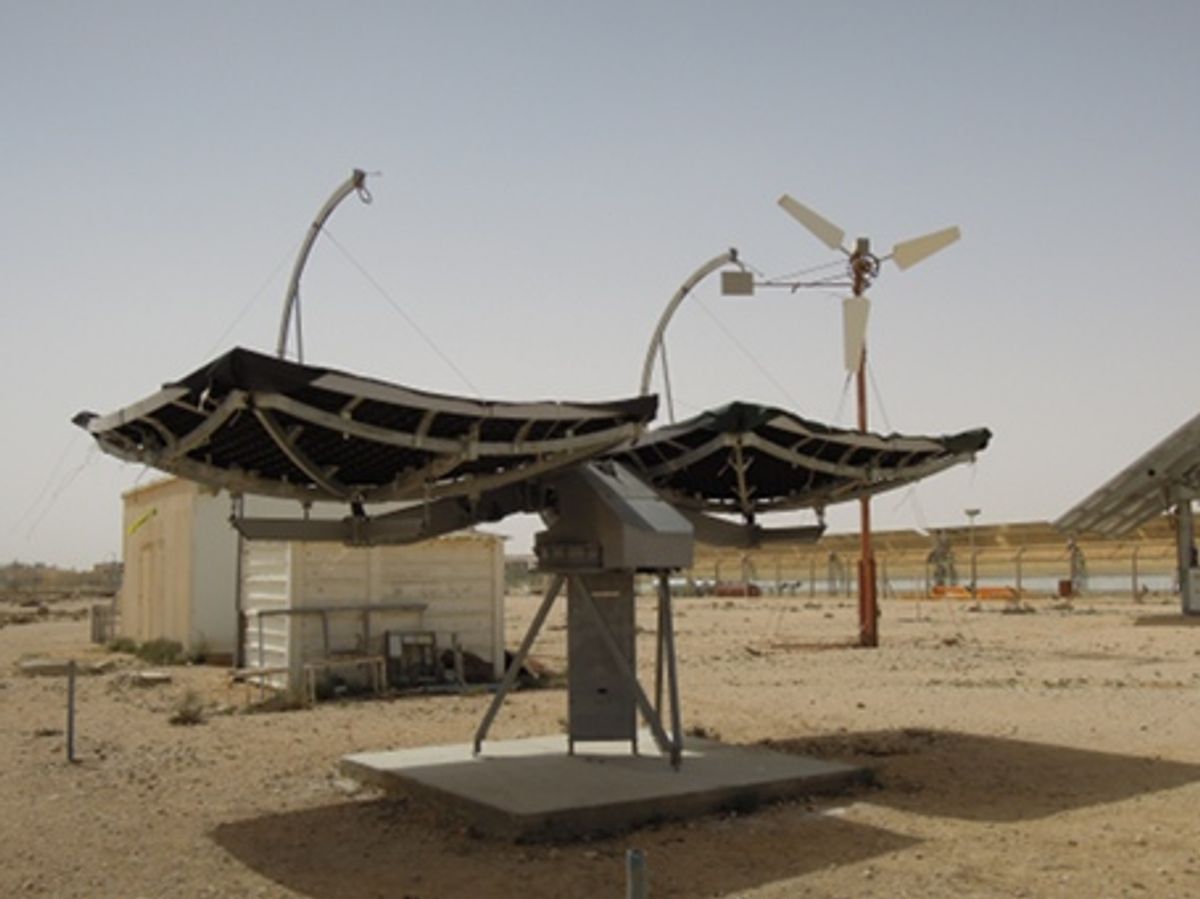Tucked away in a remote corner of a remote campus of Ben-Gurion University of the Negev in Sede Boqer, Israel, are several rows of enormous concentrating solar thermal troughs. Next to one row sits a giant dish pointing to the sky, which also generates power from the sun. An experimental vanadium redox battery is housed in a shack in the middle of the complex, and a small wind turbine spins slowly nearby. Photovoltaic panels of various types are scattered around the area.
The Ben-Gurion National Solar Energy Center combines academic research with an industry testing facility. And it's pretty much located in the perfect place: The Negev Desert gets less than four inches of rain per year, and the vast bulk of days are cloudless and sunny (though unfortunately, a windy haze prevailed on the day I visited). Companies bring prototypes and equipment here to test alongside university researchers—a large Siemens sign hangs on the fence next to the first row of solar thermal troughs.
One company spun out of research here is Zenith Solar, which launched in 2006. They make a solar product that is basically a smaller version of the huge dish sitting at the Sede Boqer site. Instead of 400 square meters of reflecting area, these need only 11. Two of these small dishes sit on a dual axis that acts as a heliostat, tracking the sun across the sky (test version at Sede Boqer pictured above). The dish reflects sunlight back toward a small photovoltaic panel and a heat exchanger that then generate both electricity and usable heat. Zenith installed 16 units at a Kibbutz in Israel called Yavne in 2009, and it generates enough power for the 220 residents that the Kibbutz now sell power back to the national grid.
Concentrated photovoltaic technology like this requires less material than traditional PV systems—one tiny solar panel on the Zenith product gives it a 4.5 kilowatt capacity, much greater than that same panel would provide just collecting the sun's light as usual. There is a tradeoff, because photovoltaics lose efficiency as their temperatures rise. Still, combining heat and power makes for an extremely efficient technology; Zenith claims the combined efficiency is 72 percent.
In Israel, though solar power doesn't yet provide much in the way of electricity, 90 percent homes get their hot water from a solar heater on the roof. Still, the country has a long way to go—last summer a renewable energy standard was passed requiring 10 percent of electricity to come from renewables by 2020. The technologies that get them there are likely to come straight out of the desert.
Photo: Dave Levitan
Dave Levitan is the science writer for FactCheck.org, where he investigates the false and misleading claims about science that U.S. politicians occasionally make.




